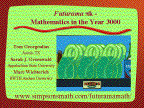
Slide 1

Futurama, which aired on Fox, follows the exploits of Fry, who accidentally fell into a cryogenic chamber and awoke 1000 years later, in the year 3000.
Futurama is especially fun to watch, because math, science or programming references seem to appear in almost every episode.
For those of you who are familiar with my work on Simpsons math, you might begin to get the idea that I watch a lot of Fox tv. While this is true, the motivation for this talk today came from Art Benjamin, one of the incoming editors of Math Horizons. He had seen the Simpsons math article and approached me about writing additional pop culture articles. Since I was a casual viewer of Futurama, I contacted some expert fans for help. My co-authors are Tom Georgoulias, who has a degree in chemical engineering from NC State, and Marc Wichterich, who is working on his Diplom in cs at RWTH Aachen University, in Germany. While we are discussing degrees, I should mention that my PhD is from the University of Pennsylvania. Our Math Horizons Futurama article is expected to appear in April [This did appear in April 2004]. And if you're interested in writing a pop culture article for Horizons please do contact Art.
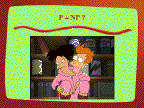
Cook and Levin formulated the P = NP problem independently in 1971. If P = NP, then every problem that can be checked with a nondeterministic algorithm can also be solved through one we can actually implement. Thus scientists have been looking for either a problem that is in NP but not in P or a proof that there is no such problem. A 1 million dollar prize has been offered to anyone who can prove whether or not P equals NP. If we had the books from Futurama that supposedly list the problems in each class, then we could compare them, see of the NP book lists any extra ones, and collect our prize money.

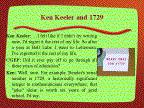
The number 1729 is sometimes referred to as the "Ramanujan-Hardy" number. One day Hardy took a cab to visit Ramanujan and commented that his taxicab number, 1729, was dull. Ramanujan quickly replied that 1729 was in fact a very interesting number since it is the smallest number that can be written as the sum of two cubes in two different ways, as 9^3 + 10^3 and 1^3 + 12^3.
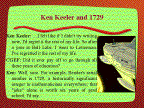
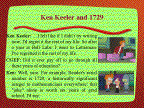
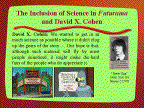
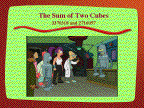
If you were listening carefully, David Cohen actually gave a hint to help you with the calculations. I'll leave that as a challenge problem.
David Cohen also mentioned Jeff Westbrook, who received his PhD in computer science from Princeton. His doctoral thesis was on Algorithms and Data Structures for Dynamic Graphs. He was a professor at Yale and also worked at AT&T labs before writing for Futurama. He and Ken Keeler also published an article in discrete applications.
There is another mathematician on staff. Steward Burns has a bachelor's in math from Harvard. His senior thesis was on the structure of group algebras and he has a master's in math from Berkeley.
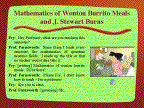
Later on Professor Farnsworth is seen teaching to an empty room as Fry arrives late to class.
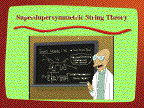
Fry is clearly in over his head and is certainly on his way to achieving his goal of becoming a college dropout.
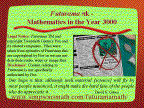
Thanks to the cleverness and mathematical backgrounds of these writers, Futurama can be especially fun to watch. And David Cohen was correct in my case. Researching math in Futurama did make a die-hard fan out of me.
But, if you think the fun is over and we've revealed all the clever jokes Futurama has, think again. It is left as an exercise for you to tune into the show and find others. Sadly, Fox has decided not to order any new episodes. This leaves fans with the option of enjoying the show through the DVD boxed sets or watching re-runs on the Cartoon Network Monday through Thursday at 11pm or 2am. Those viewers who do take the time to tune in will find their brains and funny bones richly rewarded.
Thank you.
Legal Notice:
Futurama TM and copyright 20th Television.
This web site is
for educational use only.
We do not benefit financially in any way from this web site.
The images on these pages were
taken from episodes of Futurama that are copyrighted.
We will not distribute audio, video or image files.
Disclaimer:
This web site, its
operators, and any content contained on this site relating to
Futurama
are not specifically authorized.